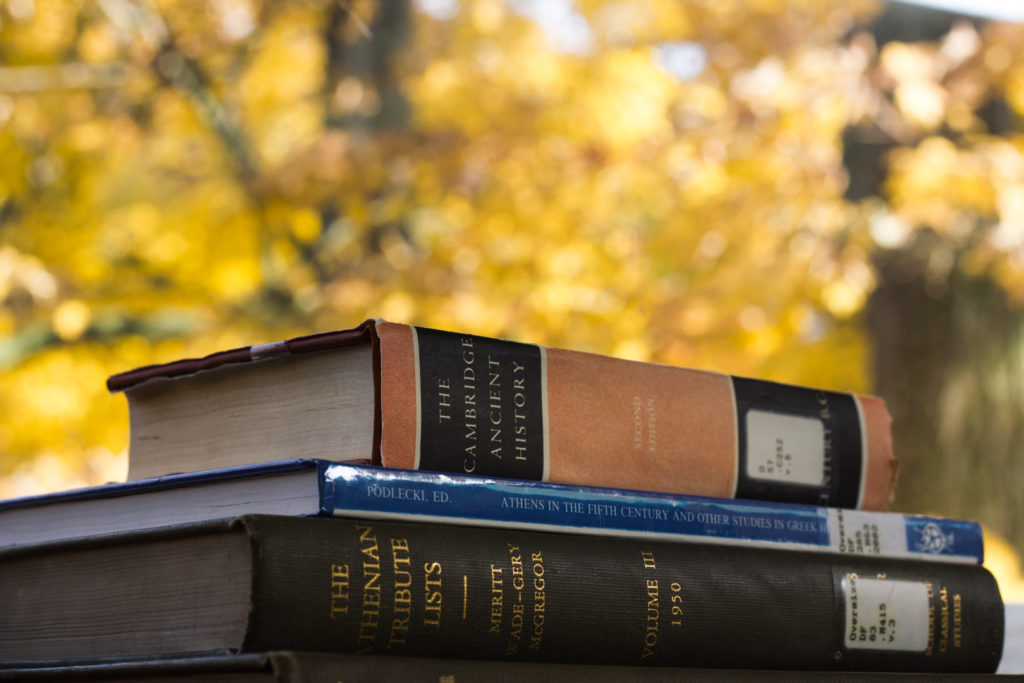
When a faculty member or a student needs a book, they go to Michael Alex Mossey Library, a Hillsdale institution since 1971. But the Hillsdale College community doesn’t have to stop with the books already on the shelves. Students and professors alike get a say in what new books are ordered.
When the library doesn’t carry a book a student or professor needs, they can recommend that the library purchase it, and often, that book soon ends up on the shelves of the library, available for checkout. The steady recommendation of new books is one of the ways in which the library collection changes to support the changing curriculum, Public Service Librarian Linda Moore said. Mossey Library adds almost 5,000 new books each year to its more than 266,000 strong book collection.
One of the advantages of acquiring books based off of faculty recommendation is that faculty are better able to judge an academic book’s content than librarians, Technical Service Librarian Maurine McCourry said.
“Librarians, we read review literature quite a bit and I read a lot of newspapers to find reviews on new books, but I’m not a Ph.D. in politics. A Ph.D. in politics knows more about politics than I do,” McCourry said. “We try to get recommendations from faculty because they know what is really important in their respective disciplines.”
Faculty members can recommend books for a variety of reasons, said the Harris Chair of Military History and Professor of History, Tom Conner. Conner said the ability to order new books helps the faculty improve their ability to teach a course effectively, and it also allows them to further their own research interests.
“There’s a number of different factors to take into account for a recommendation: General interest, your own interest, and what could possibly further your own effectiveness in a course,” Conner said. “I think faculty will sometimes order a book selfishly, and not think first of the larger community, if they see a book that is right down their alley in terms of their own research interest.”
In addition to faculty members and librarians, students can also make recommendations for library acquisitions, and the process isn’t that hard. Students can submit a recommendation by sending an email to McCourry.
McCourry said she thinks students use this privilege infrequently because not all of them even know they can request that the library purchase a book. When students do recommend books, McCourry said they tend to be just as academic in nature as books recommended by faculty.
“Students have actually been really good about recommending things that support their studies, not just a fun novel they want to read,” McCourry said.
While the preferences of the faculty and students can change the content of the library, new programs and technology also change the library experience. The adoption of MeLCat, the Michigan interlibrary loan program, gives students access to more than 47 million works and changed the type of books the library acquires for its shelves.
“We used to add more popular titles, and we still do some,” Moore said. “We tend to do less of that now because of MeLCat. We don’t feel we need to support the leisure reading of students as much as we used to because you can get that stuff on MeLCat. There’s perhaps a better use of our funds.”
With the faculty and the students playing such a large role in the addition of new books to the library’s collection, the books recommended definitely have a pattern. Moore said that conservative thought is well-represented in the library’s collection, but the library does not try to promote a certain ideology over another.
“We want more than one side of an issue represented, that way people can make up their own mind,” Moore said. “That’s what our goal is.”

